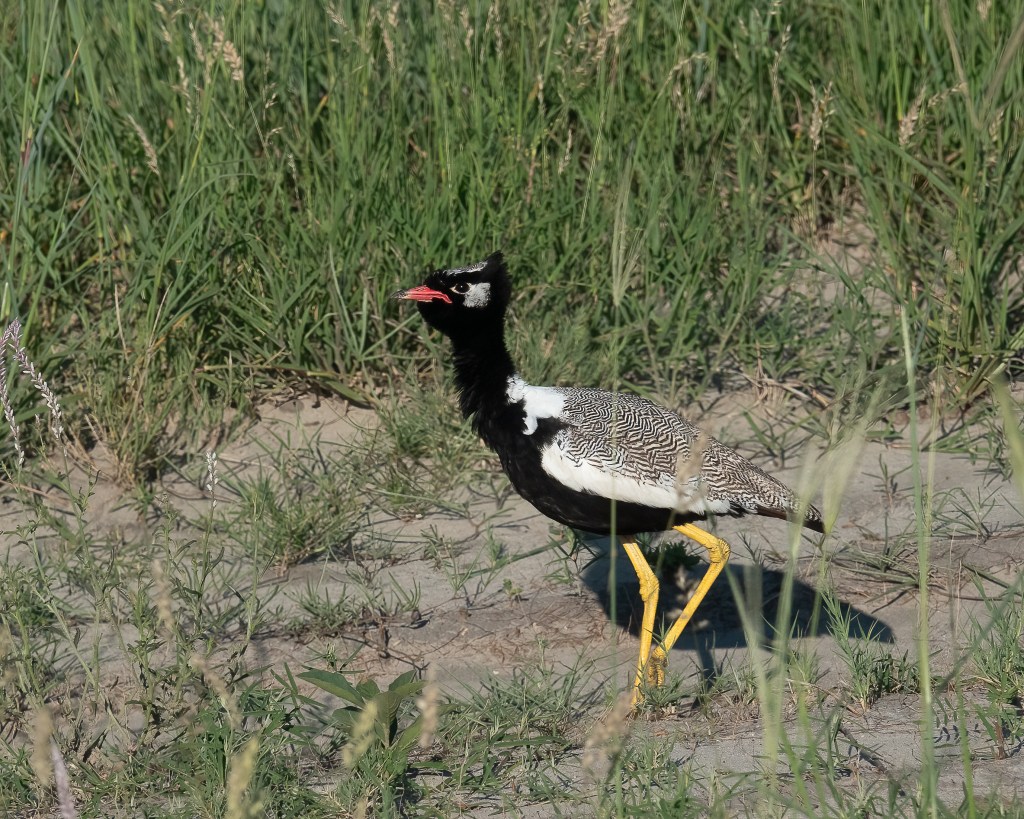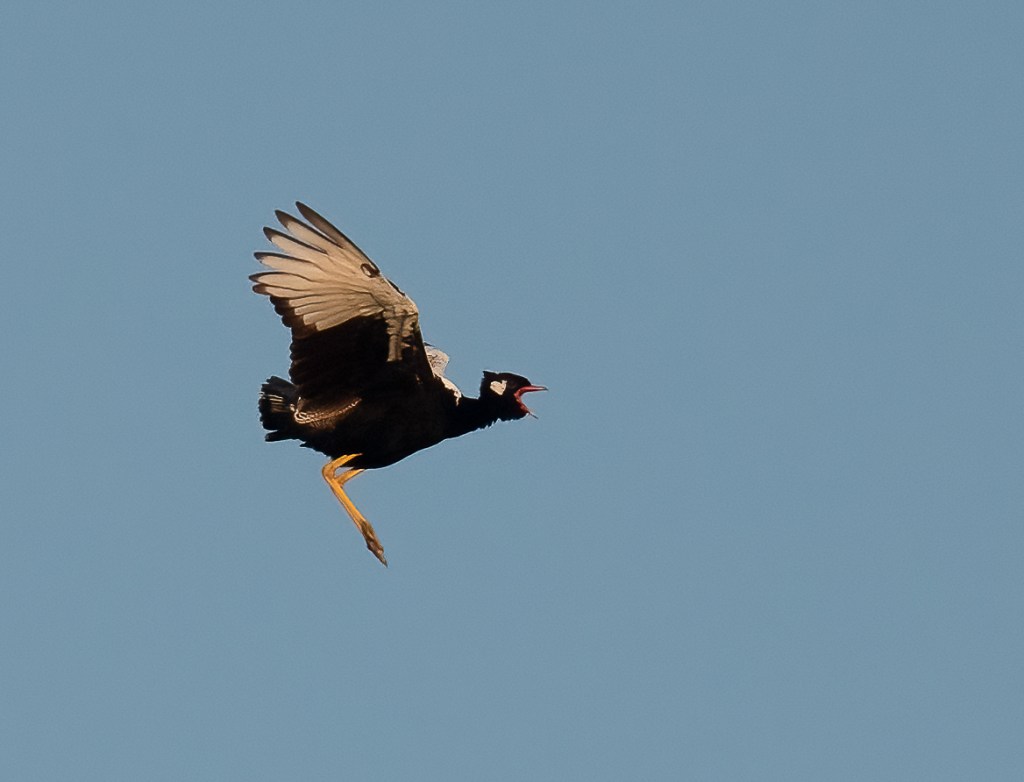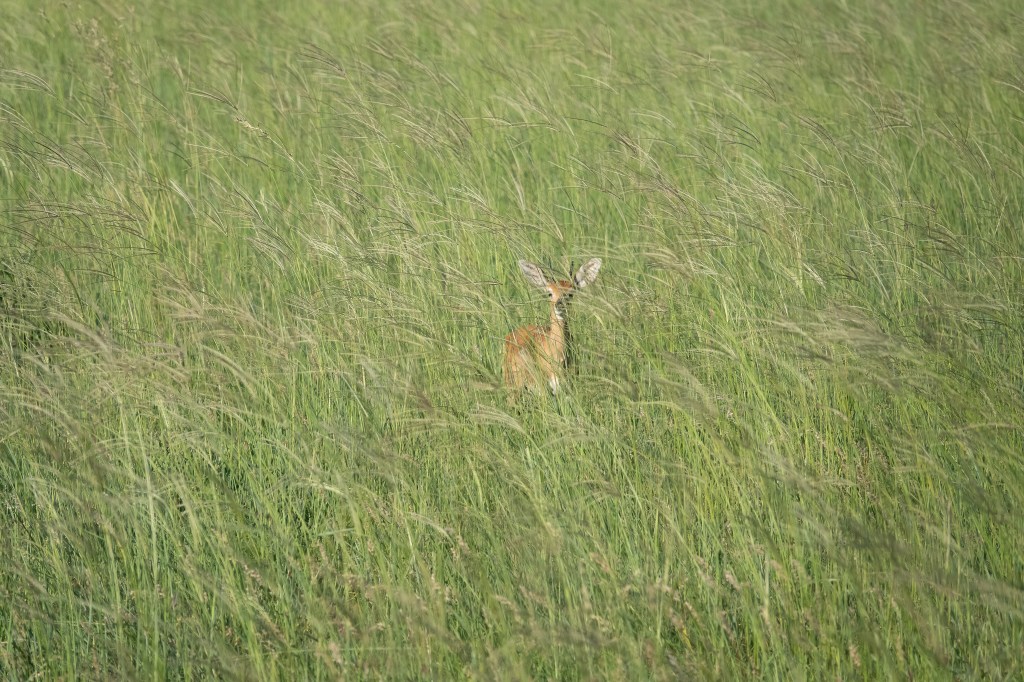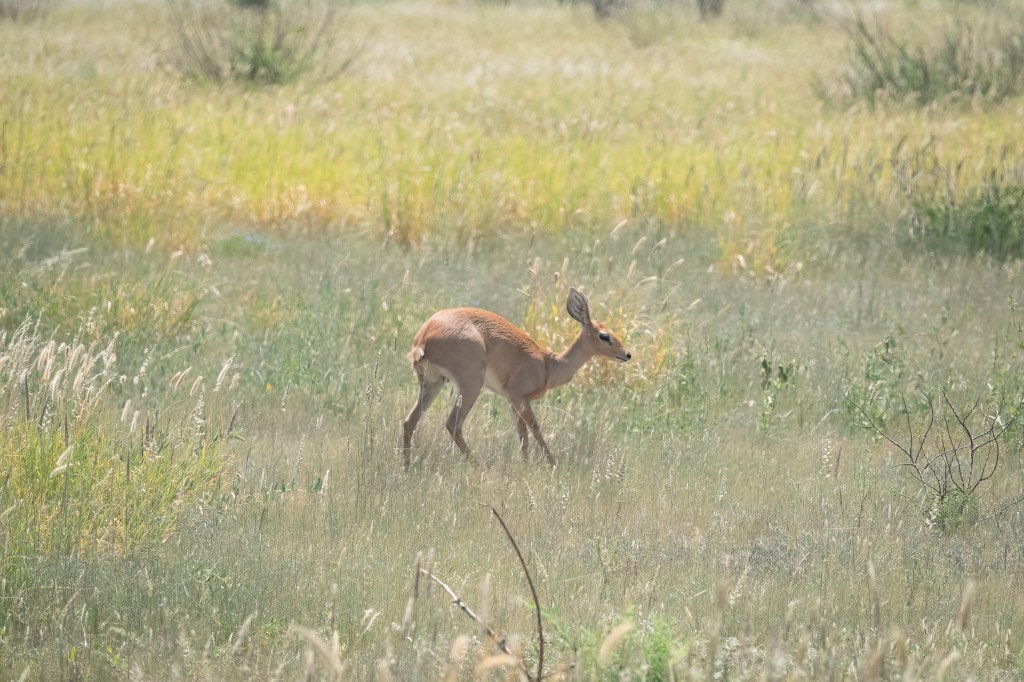We saw two species of fox in Botswana. Our favorite was the Bat-eared Fox, Otocyon megalotis. Here are four from a distance (in the Kalahari), either a pair with two cubs, or possibly two pairs.
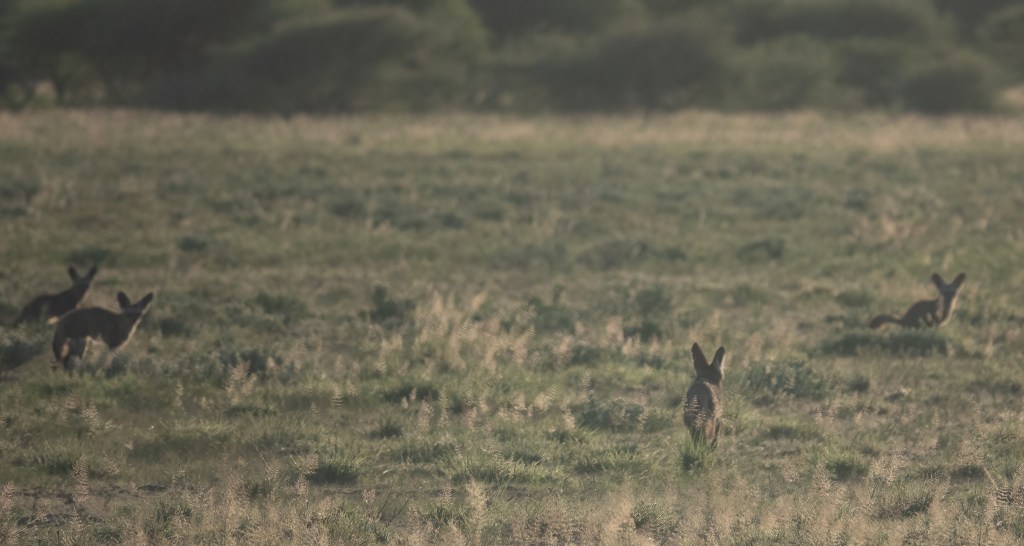
They weigh about 4Kg, and are the only truly insectivorous canids, eating mainly termites. Their teeth are adapted for this diet, and they have no really close relatives, being the only members of their genus. The rest of these pictures were taken in Makgadikgadi NP.
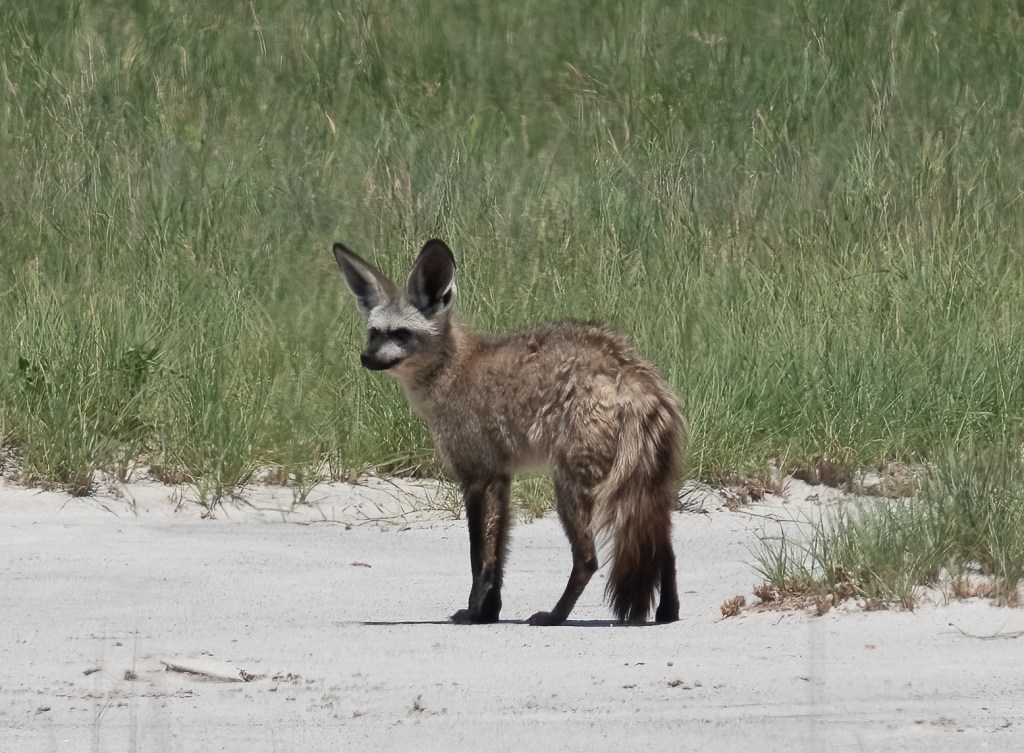
They have enormous ears, which help in thermoregulation;

and they have charming faces:
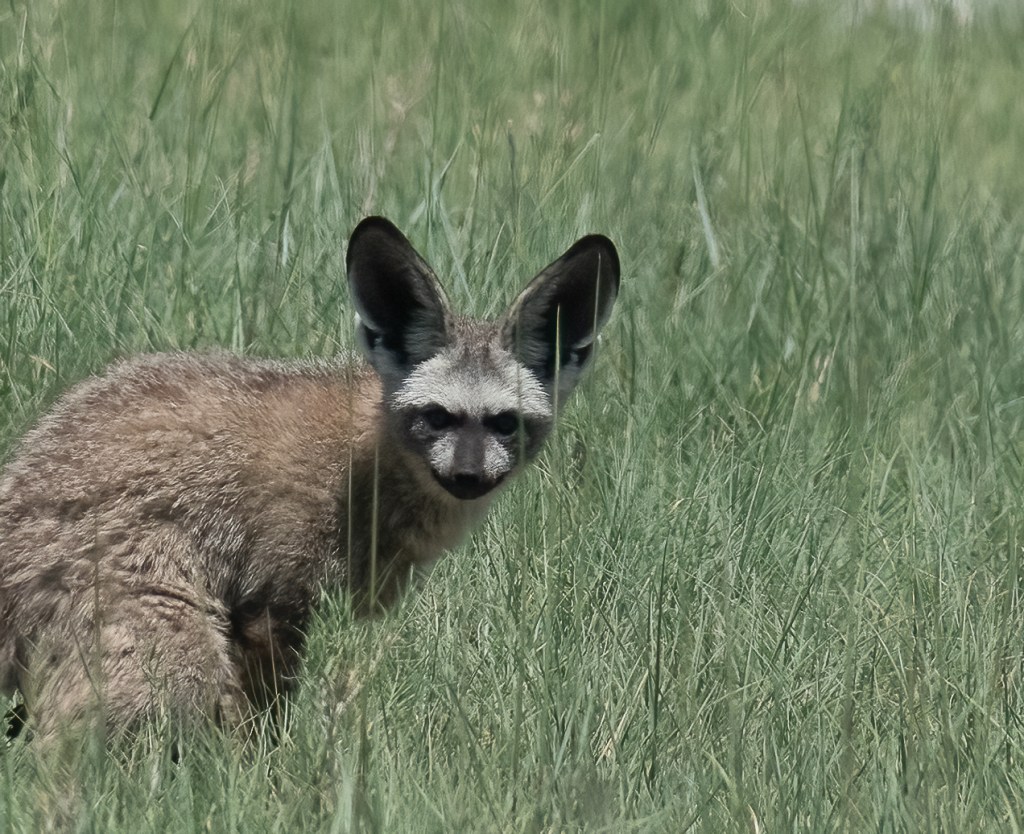
This one was motionless*,

giving me time for a second close-up:
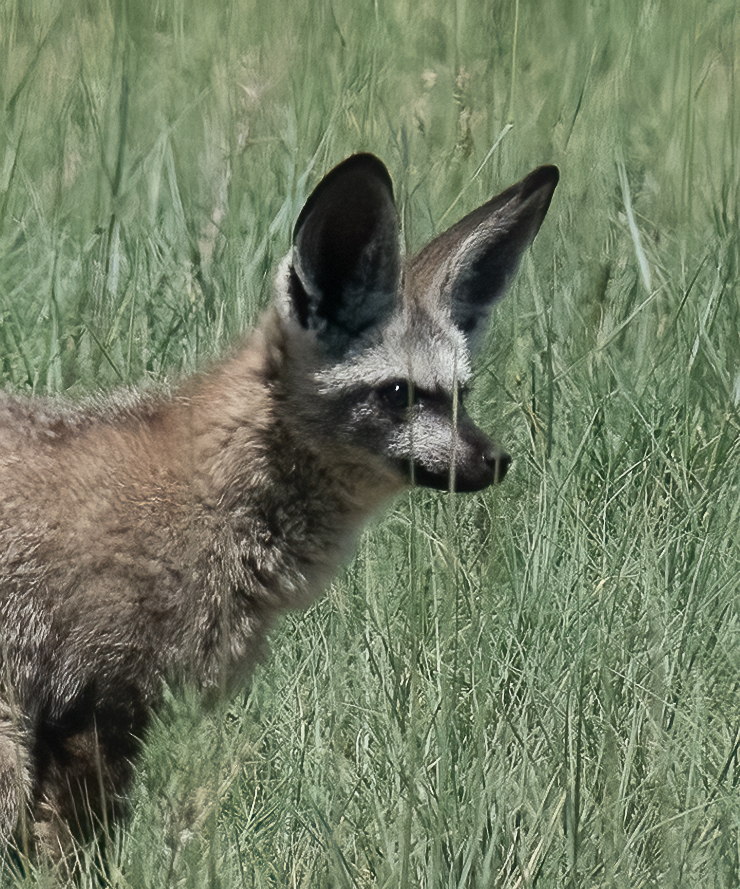
They are socially monogamous, these two were part of a family of three,

The cub was fascinated by us and sat down close to the vehicle to study us more closely:
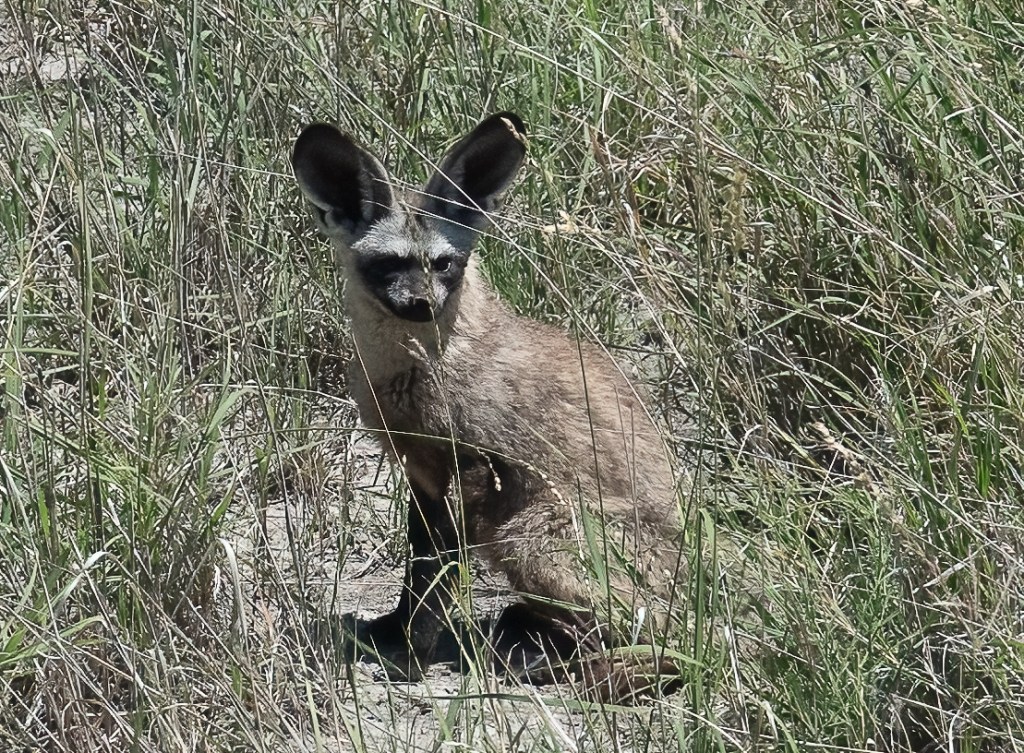
Socially monogamous species are not always sexually monogamous, as shown by studies of Extra-Pair Paternity (EPP). In these foxes, though, the level of EPP is low, under 10% of cubs (Wright 2010). This may be one reason that males invest large amounts of time in caring for the cubs: more than the females, in fact. In socially monogamous birds there is known to be a correlation between low rates of EPP, and high rates of paternal care. (Søraker et al 2023).
To close, the other fox species we saw, the Cape Fox:

* We Brits love a good pun.
